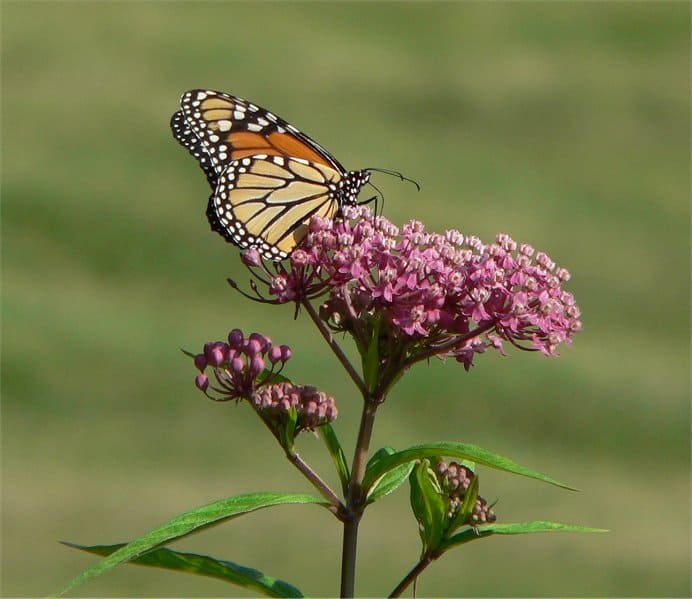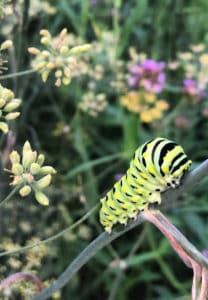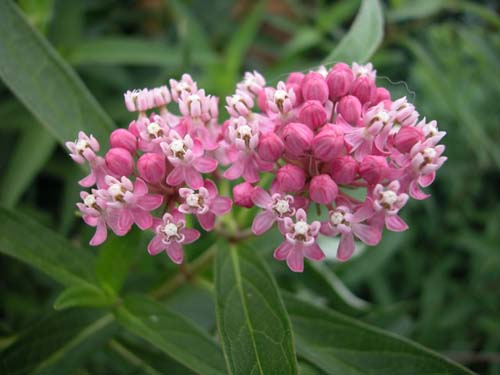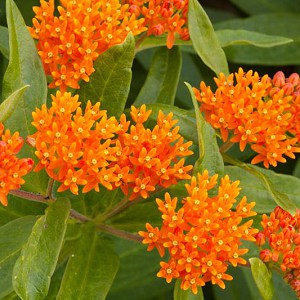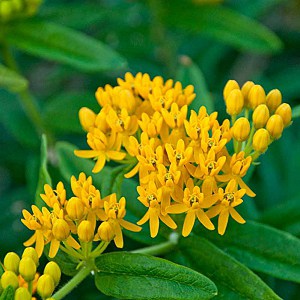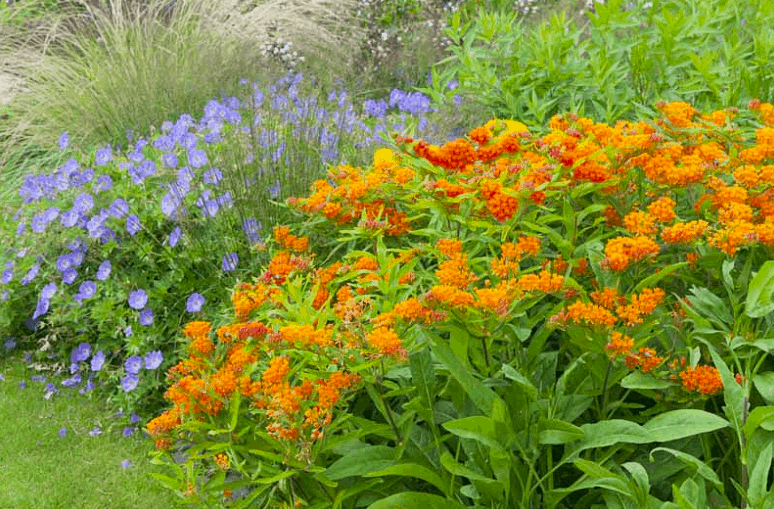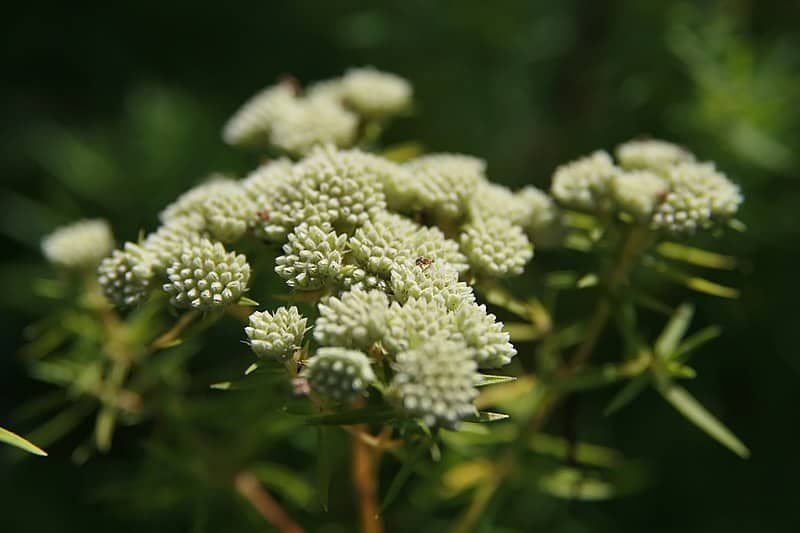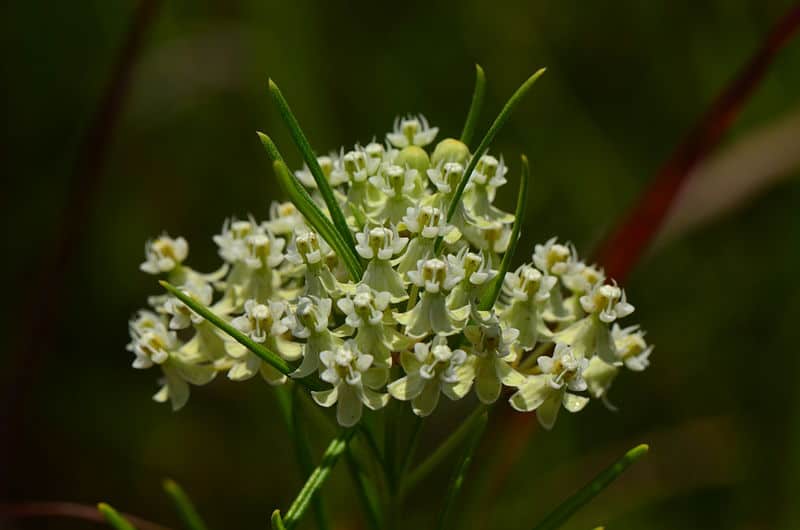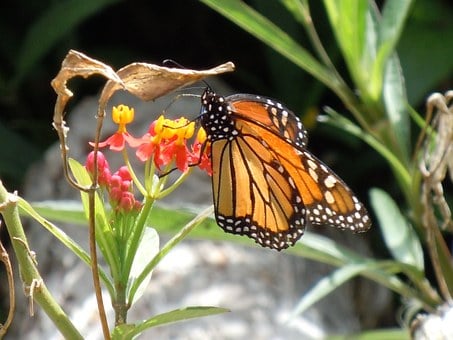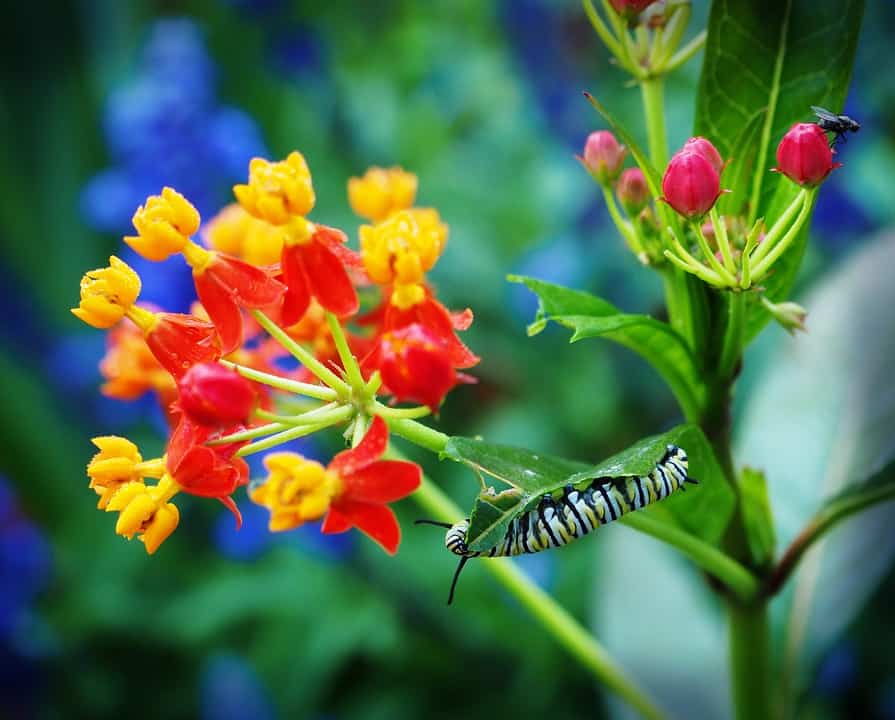Butterfly Milkweed is essential for supporting butterflies and pollinators at home.
Butterfly Milkweeds are nectar-rich wildflowers that attract Monarch butterflies, the leaves of the milkweed are an essential food source for caterpillars.
Once you have identified the perfect location for your chosen milkweed, next you want to make sure the area retains adequate moisture and is grown well out of the reach of young children. Pet’s should also be kept away from Milkweed as the white milky sap is toxic and must be avoided.
When you start a pollinator garden it is important to consider both the location and growing conditions, some milkweed will thrive in full sun others prefer shelter from the woodland edge.
The following milkweed is some of my personal favorites and beneficial for wildlife as well as plants worthy of space in your garden beds, prairie meadows, and container for a summer-long of colorful flowers and butterflies.
Rose Common Milkweed for Monarch Caterpillars and Butterflies
Pink Swamp Milkweed – Asclepias incarnata – Swallowtails, Fritillaries, Hairstreaks, and Skippers.
Butterfly Orange Milkweed – Asclepias tuberosa – Butterflies, bees, and pollinators
Whorled Milkweed – Asclepias verticillata – Important host for Monarch caterpillars, and pollinators.
Tropical Milkweed – Asclepias curassavica for Monarch’s, Swallowtails, and Painted ladies.
Butterfly Milkweed is easy to start from seed if you follow some simple instructions and once established they will self-seed and young plants will appear and can thrive and flourish for many years.
Once you have received your freshly collected, carefully cleaned milkweed seeds, unpack immediately and place the seeds in the vegetable drawer of your refrigerator until you are ready to prepare your seeds.
Butterfly Milkweed seeds can be a) sown direct, exposed to winter weather the seeds will go through a natural stratification process, however, the results can be varied and germination rates can below.
Alternatively if you have a small amount of seeds you may prefer to start your seeds under protection for better control over the results, if you decide the indoor method then your seeds will require stratifying.
First moisten a 4-way folded paper towel with bottled water, place the paper towel opened out flat on a re-used flattzip-lock plastic bag.
Next place the milkweed seeds evenly on the paper towel approx 1’’ apart once complete re-fold the paper towel careful to keep the seeds in-place.
Place the plastic bag in the vegetable drawer of the refrigerator for at least 30 days prior to sowing.
I like to time sowing my seeds with the warming rays of late Winter / Early Spring, as in nature the warming sun rays begins to warm frozen earth and spring bulbs continue to appear.
On opening the seeds and paper towel, the healthy seeds may well have changed in size, taking on some of the moisture from the paper towel makes the seeds swell.
Planting the seeds direct in a sunny position, dig a hole about 1/2″ deep drop the seeds in and backfill the hole, firming the soil in-place.
Mark the location of your seeds with a label and continue to water them well for several weeks.
Around 8 weeks later, your milkweed plant will become caterpillar food. Monarch caterpillars eat about 20 leaves each, it is critical that you grow enough plants to feed the caterpillar or they will die from hunger.
Butterfly Milkweed is essential for Monarch caterpillars but they should be treated with caution, plant them at the back of a border out of reach from pets and children as the white milky sap is toxic and to be avoided.
Butterfly Milkweed is an important pollinator for many threatened wildlife including Monarch butterflies – Read more and help Save Our Monarchs or buy seeds below to grow your own butterfly garden.
I find growing plants from seed incredibly rewarding, even the smallest of outdoor garden areas can be a productive workout for all the family. Try thinking of your garden as a living kitchen and grow to love fresh flowers, organic fruit, and vegetables straight from your own backyard oasis.
Stephen Pryce-Lea
How’s your soil health? This simple soil test kit is easy to use and results in just a few days! Essential Test kit for gardeners

